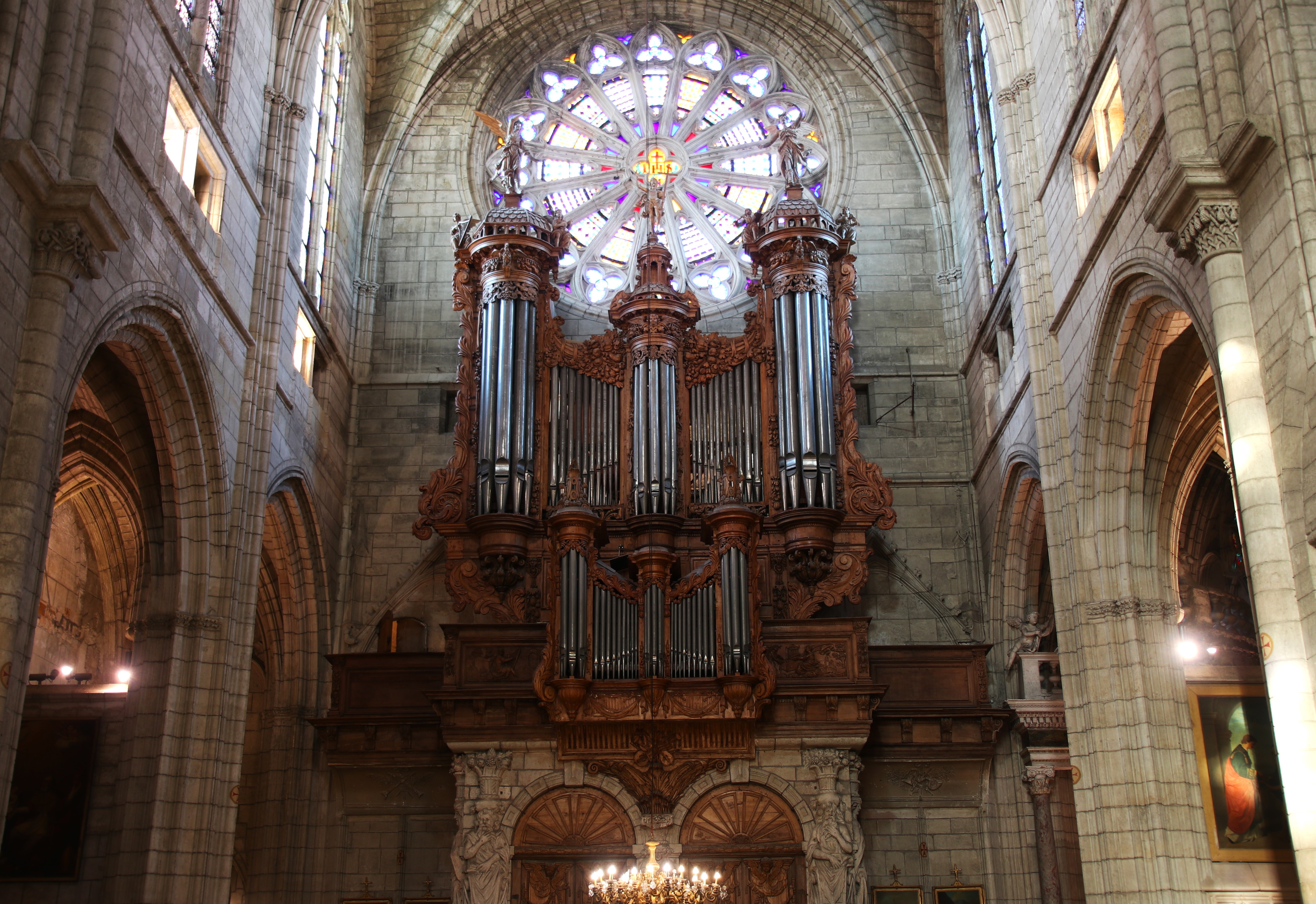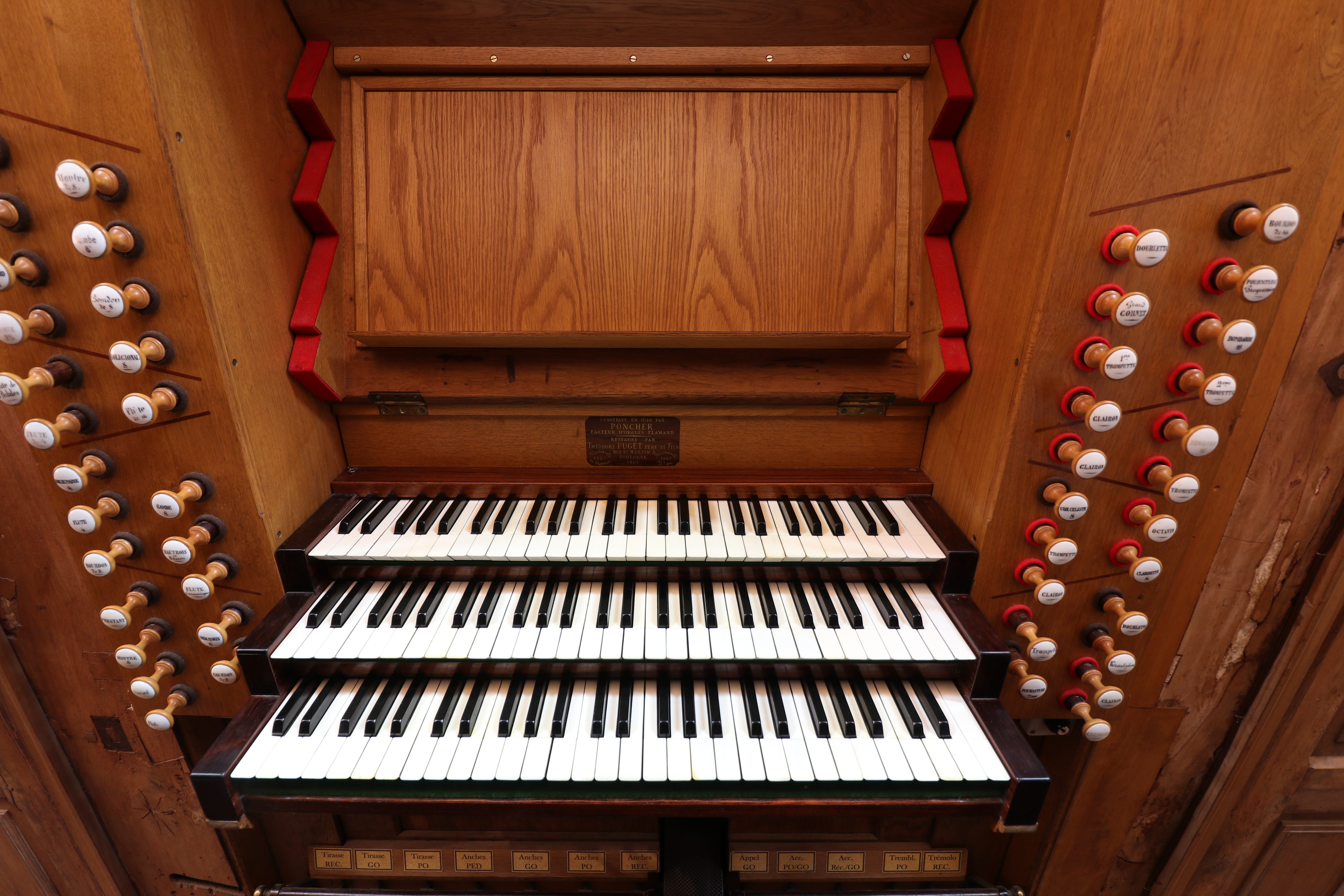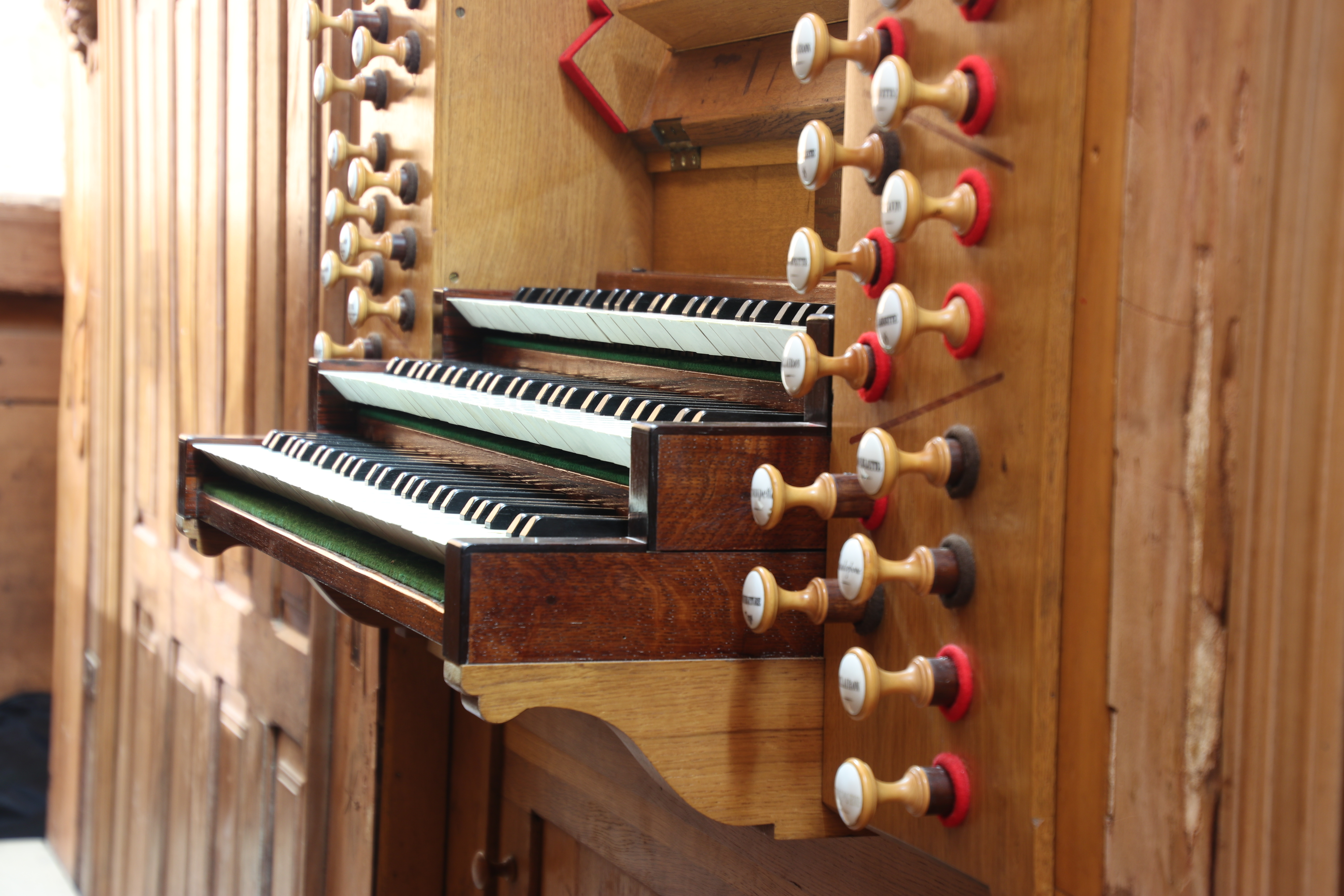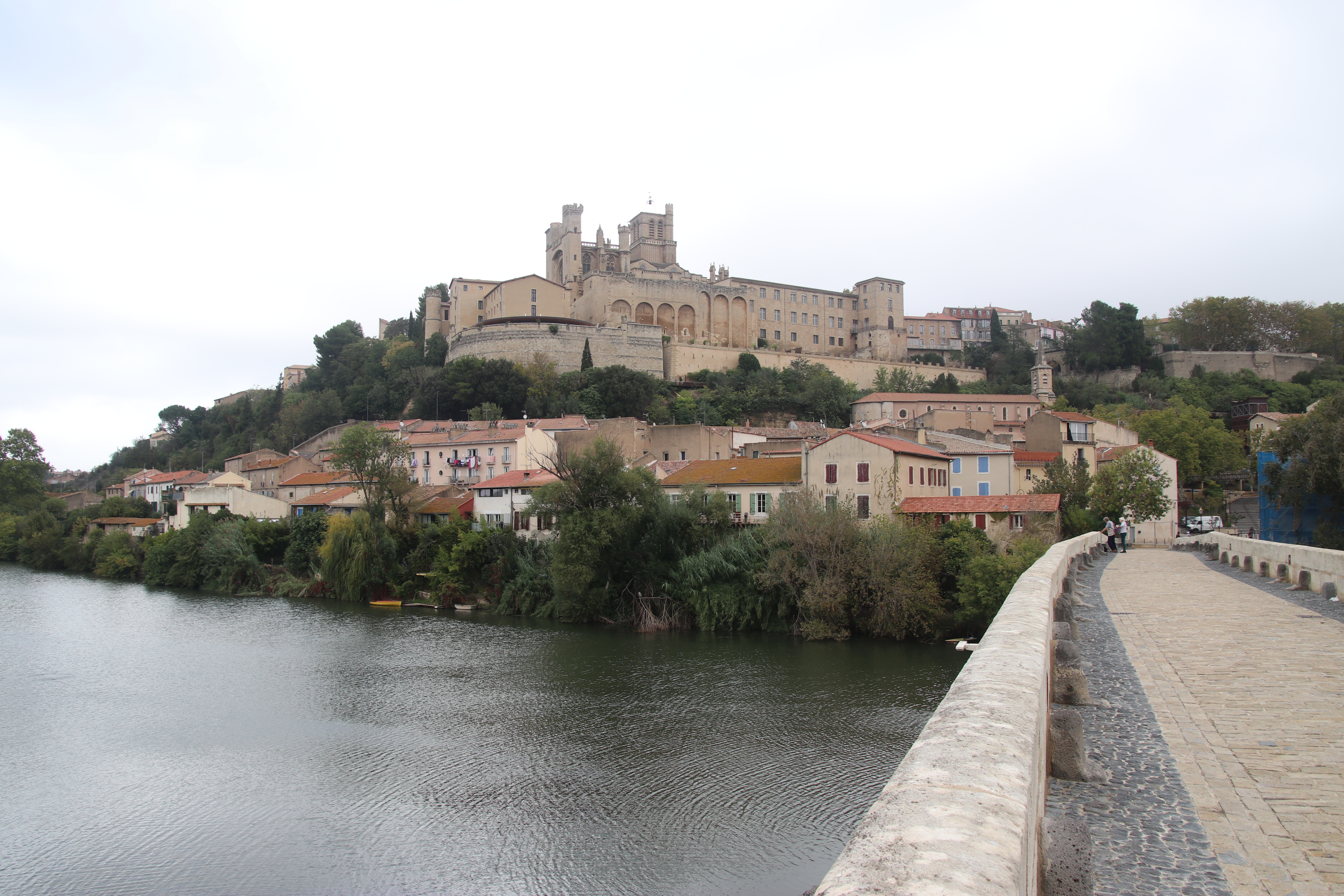Béziers, Cathédrale Saint-Nazaire
| Builder | Puget |
|---|---|
| Year | 1868 |
| Period/Style | Romantic |
| Stops | 45 |
| Keyboards | 3+P |
| Keyaction | tracker/mechanical |
| Tuning | Equal |
| Sampleset |
Available
 , sampled by
Sonus Paradisi
, sampled by
Sonus Paradisi
|
The organ at Béziers Cathedral was initially contracted for construction in 1623 with Flemish organ builder Guillaume Poncher, featuring two manuals and a pedalboard with one 16' wooden stop. Completed in 1633, it has retained its original gallery and rich decoration. Throughout its history, several renowned organ builders such as Jean de Joyeuse, Guillaume Monturus, Joseph Isnard, and Jean-François L'Épine have contributed to its maintenance and modifications. The organ suffered significant damage during the French Revolution, losing most of the Grand Orgue pipes.
In the 19th century, the organ underwent multiple reconstructions. Nicolas Chambry rebuilt it in 1841, expanding it to five manuals but maintaining its 18th-century foundation. Aristide Cavaillé-Coll attempted updates in 1849, but financial constraints limited the scope. In 1868, Théodore Puget et fils transformed the organ into a Romantic-style instrument, respecting much of the old pipework, particularly the Positif. Further modifications were made in 1881 and 1930 by Eugène and Maurice Puget, respectively. A significant restoration in 1993 by Manufacture Languedocienne de Grandes Orgues restored much of the 1868 composition while preserving the historical reed stops. The organ today features 45 stops, 59 ranks, and retains a mix of historical pipework, including elements from Poncher, de Joyeuse, Monturus, Isnard, Chambry, Cavaillé-Coll, and Puget.
In the 19th century, the organ underwent multiple reconstructions. Nicolas Chambry rebuilt it in 1841, expanding it to five manuals but maintaining its 18th-century foundation. Aristide Cavaillé-Coll attempted updates in 1849, but financial constraints limited the scope. In 1868, Théodore Puget et fils transformed the organ into a Romantic-style instrument, respecting much of the old pipework, particularly the Positif. Further modifications were made in 1881 and 1930 by Eugène and Maurice Puget, respectively. A significant restoration in 1993 by Manufacture Languedocienne de Grandes Orgues restored much of the 1868 composition while preserving the historical reed stops. The organ today features 45 stops, 59 ranks, and retains a mix of historical pipework, including elements from Poncher, de Joyeuse, Monturus, Isnard, Chambry, Cavaillé-Coll, and Puget.
| I Grand-orgue | II Positif | III Récit expressif | Pédale |
|---|---|---|---|
| Montre 16’ | Montre 8’ | Bourdon 8’ | Flûte 16’ |
| Bourdon 16’ | Bourdon 8’ | Flûte harmonique 8’ | Flûte 8’ |
| Montre 8’ | Kéraulophone 8’ | Viole de gambe 8’ | Flûte 4’ |
| Bourdon 8’ | Unda Maris 8’ | Voix céleste 8’ | Bombarde 16’ |
| Solicional 8’ | Prestant 4’ | Flûte octaviante 4’ | Trompette 8′ |
| Gambe 8’ | Flûte allemande 4’ | Octavin 2′ | Clairon 4’ |
| Gros nazard 5 1/3’ | Nazard 2′2/3 | Trompette 8′ | |
| Prestant 4’ | Doublette 2′ | Basson-Hautbois 8’ | |
| Quinte 2’2/3 | Plein-jeu III à VIII rgs | Voix humaine 8’ | |
| Doublette 2’ | Trompette 8′ | Clarinette 8’ | |
| Fourniture II à IV rgs | Cromorne 8′ | Clairon 4' | |
| Grand cornet V rgs | Clairon 4' | ||
| Bombarde 16’ | |||
| 1re Trompette 8’ | |||
| 2e Trompette 8’ | |||
| Clairon 4' |
Cesar Franck - Prelude Fugue et Variation
0:00
0:00
Charles-Alexis Chauvet - Office des Morts
0:00
0:00
Daniel Ruyneman - Fanfare from Premier Sonatine
0:00
0:00
Eugene Gigout - Toccata
0:00
0:00
Louis James Alfred Lefebure-Wely - Sortie en mi bemol majeur
0:00
0:00
https://www.sonusparadisi.cz/en/organs/france/beziers-cathedral-puget-organ.html
 Pipe Organ Map
Pipe Organ Map






